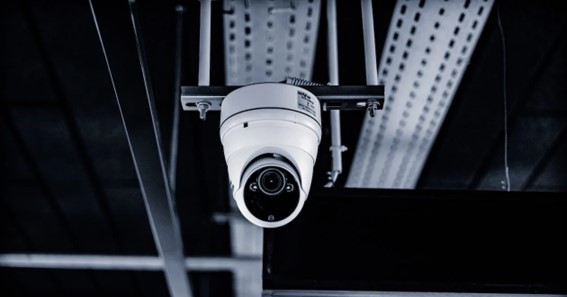Attendance monitoring systems have become a popular tool in many different sectors, ranging from education to the workplace. By providing employees and students with an easy way to track attendance, these systems can help improve efficiency and accuracy of record-keeping.
This article aims to provide readers with a comprehensive overview of attendance monitoring systems and their uses. By understanding how they work and what advantages they offer, organizations can make informed decisions about whether or not implementing one is right for them.
Benefits Of Monitoring System
With the definition of attendance monitoring systems established, it is important to consider their benefits. According to one study conducted by Harvard Business School, businesses that implemented an attendance monitoring system reported a 20 percent reduction in absenteeism and a 17 percent increase in employee productivity[1]. This clearly demonstrates the effectiveness of these systems for improving workplace efficiency.
Utilizing an attendance monitoring system can provide numerous advantages such as:
- Enhanced accuracy – Attendance data recorded through electronic methods are more reliable and accurate than manual recording processes.
- Improved visibility – Organizations have better insight into staff performance levels with real time access to up-to-date records.
- Cost savings – Automating this process saves money by reducing administrative costs associated with manually tracking hours worked.
These systems also facilitate effective communication between employers and employees about work schedules and absences due to illness or family obligations. The ability to track trends in tardiness or missed shifts allows managers to take proactive steps towards addressing any issues before they become problems.
Additionally, organizations benefit from improved compliance with labor laws regarding overtime pay and other regulations related to employee compensation.
Click here – 5 Top JIRA Alternatives for Efficient Development Project Management
Components Of A System
An attendance monitoring system consists of various components that enable it to function.
One such component is an identification card, which contains the individual’s unique identifier and any other relevant information about the person. This card can be used for logging in and out of a system, or as part of a biometric authentication process.
Another important component is software that allows administrators to track time-in and time-out data, calculate hours worked, and generate reports on employee attendance.
In addition to this, hardware devices are also necessary in order to capture the data generated by employees when they login or logout. These may include scanners, RFID readers, cameras or facial recognition systems.
Finally, access control devices like locks and turnstiles can help prevent unauthorized entry into office spaces or areas with restricted access.
The use of these components helps organizations maintain accurate records and ensure compliance with labor laws regarding working hours and overtime pay.
How To Set Up Attendance Monitoring System
Setting up an attendance monitoring system is like building a bridge: it requires careful planning and meticulous execution.
- The first step in this process is to determine the type of system you will use. Depending on your needs, budget, and resources available, there are several options to consider such as biometric systems, RFID-based systems, and cloud-hosted applications.
- Once you have made your selection, you need to install the hardware or software needed for the particular system you have chosen. This may include installing additional equipment at each entry point or setting up network access points for mobile devices.
- Afterward, configure settings so that data can be accurately collected and stored in whichever format works best for your organization’s needs.
- Finally, provide training to all users involved with the operation of the system; from administrators who manage its setup to staff members whose activities are being monitored.
By taking these steps into account and following through accordingly, organizations can effectively implement an attendance monitoring system which meets their requirements while still complying with applicable labor laws.
Click here – Benefits of Hiring a Car Accident Lawyer
Data Collection And Analysis
Once an attendance monitoring system is in place, the data can be collected and analyzed. Data related to employee attendance must be gathered systematically and accurately as it will impact various aspects of business operations.
It should include factors such as late arrivals, early departures, absences, tardiness and vacations taken by employees. This information will help employers measure productivity levels and make informed decisions about how to improve their workforce management strategies.
Data analysis involves examining the available data to identify patterns or trends that may have a positive or negative effect on performance. Employers can use this information for benchmarking purposes which helps them evaluate current policies and procedures as well as future initiatives.
Additionally, analyzing attendance-related data allows employers to detect issues with absenteeism or any other problem before they become severe enough to affect the entire organization.
Analyzing attendance data also provides insights into employee morale and engagement levels which are important metrics for measuring organizational success.
By looking at individual employee’s attendance records companies can assess whether there are underlying problems such as burnout or job dissatisfaction that need addressing.
Furthermore, these analyses can provide valuable feedback on team dynamics so organizations can better manage their staff resources while ensuring maximum efficiency and effectiveness across all departments.
Types Of Reports Generated
Attendance monitoring systems can generate a variety of reports that are beneficial to organizations.
The first type is an attendance report, which offers insight into the number of hours worked by each employee and how many days they were absent or late. This helps employers track the performance of their employees and identify any issues with punctuality or absenteeism.
Additionally, it allows them to make more informed decisions about scheduling staff members.
The second type of report generated by attendance monitoring systems is an audit trail report. This provides a detailed log of all changes made to employee schedules and records over time.
It also includes information on who made those changes and when they occurred, allowing employers to trace back any discrepancies in data entry or errors in reporting.
Furthermore, this type of report can be used for compliance purposes, helping companies ensure that payroll rules have been followed correctly.
Finally, some attendance monitoring systems offer time-off requests and approvals as part of their feature set.
These reports provide managers with access to up-to-date summaries of approved time off for every employee within the organization and help them better manage vacation allotments.
With this information at hand, supervisors are able to adjust staffing levels accordingly while ensuring everyone has sufficient periods of rest from work duties throughout the year.
Security Considerations
Attendance monitoring systems can offer a number of security benefits.
Firstly, they are able to capture digital images and store them within the system which makes it easier for employers to monitor employee attendance. This helps employers ensure that employees are actually present in the workplace while on duty and also allows them to identify any discrepancies between actual working hours and what is reported by the employee.
Secondly, these systems help improve physical security as they allow employers to control access into restricted areas or departments more effectively.
Finally, some attendance monitoring systems have features such as authentication protocols that require users to use their own credentials when signing in or out from the premises, thus providing additional protection against unauthorized access.
These measures not only enhance security but also reduce potential risks associated with fraud or theft.
Conclusion
Attendance monitoring systems have become increasingly popular in educational institutions. The system provides an organized way to ensure that students are attending classes and also allows for data collection and analysis of student attendance patterns over time.
With the help of these systems, teachers can better understand their students’ needs and provide them with personalized attention if needed. This ultimately leads to improved academic performance among students.
The implementation of such a system requires careful consideration of its components, as well as security measures to protect student privacy. Data collected through this system must be handled carefully and responsibly so that it is not misused in any way.






